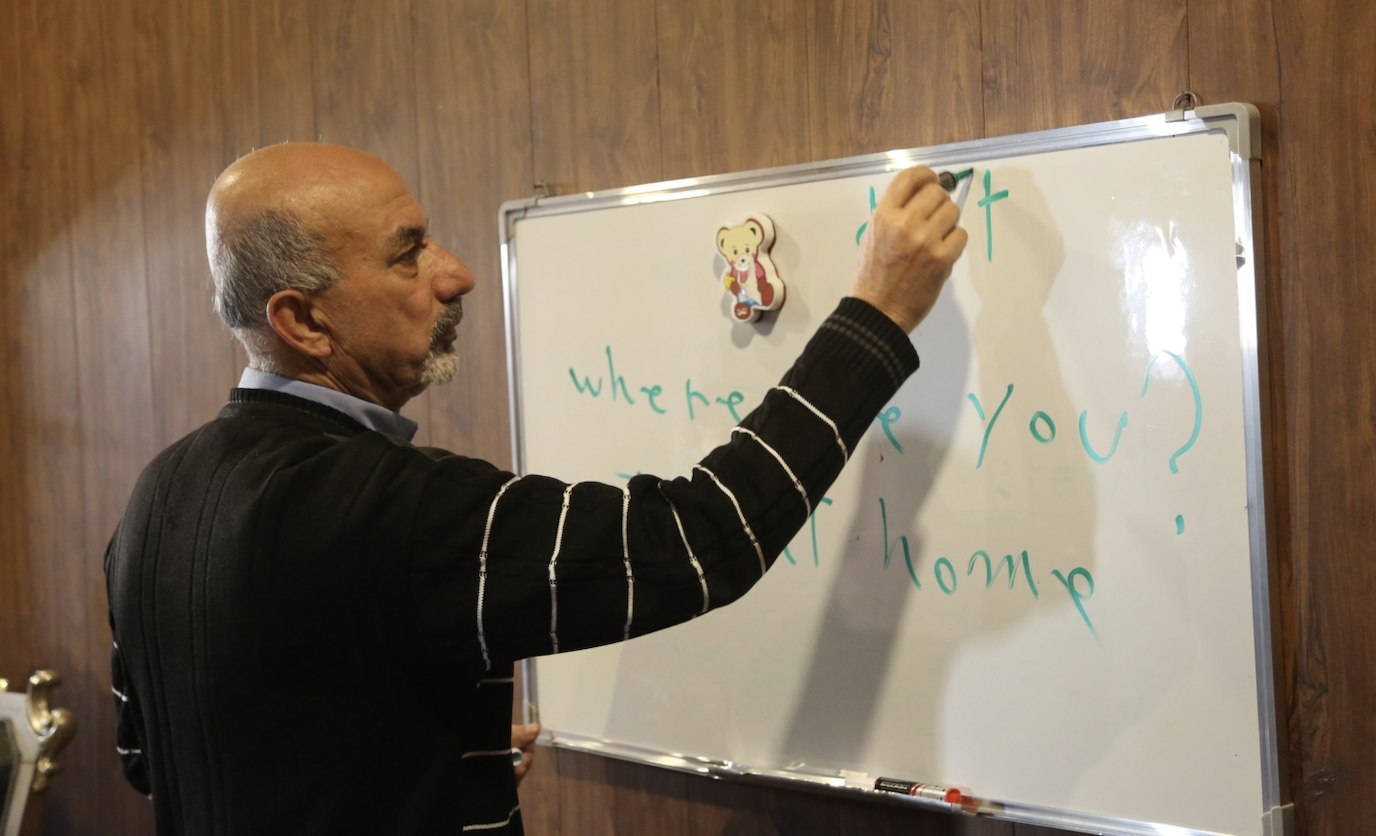In his humble office in Erbil, Jalal al-Abdullah, a Syrian-Kurdish language professor, tells Kurdistan Chronicle about his inspiring journey from Qamishli to Erbil, the capital of the Kurdistan Region. A success story that started from scratch, al-Abdullah is a living example of the ability of refugees and their will to rebuild their lives under challenging circumstances.
“I ran a language institute in Qamishli for more than seven years before seeking asylum here,” al-Abdullah recalls in a tone that mixes the bitterness of separation with the hope of a new beginning. The institute offered courses in six different languages: Arabic, Kurdish, German, Turkish, English, Russian, and Farsi.
2015 was a turning point in al-Abdullah’s life, as that was the year he was forced to take refuge in Erbil. “The first challenge was purely bureaucratic,” al-Abdullah explains, referring to his struggles with identification papers and registration with the UN High Commissioner for Refugees (UNHCR). But his extensive academic experience quickly paved the way for him to find opportunities teaching at language institutes for two and a half years, before he decided to switch to private teaching and focus on Arabic language teaching.

Kurdistan: A haven for 286,000 refugees
According to figures published by the UNHCR in December 2024, the Kurdistan Region hosts 286,171 refugees, which constitutes 85% of the total refugees in Iraq.
According to the UNHCR’s demographic classification, they are distributed as follows: 147,972 males, 138,199 females, 11,101 elderly, and 49,116 youth (15-24 years old), while women and children constitute the largest segment, at 203,447 people.
Regarding geographical distribution, Erbil tops the list of the host cities with 152,535 refugees, followed by Duhok with 91,845, then Sulaymaniyah with 41,791.
What distinguishes Al-Abdullah’s experience is his ability to build bridges of communication with his students from different backgrounds. “I succeeded in forming strong relationships with both Arab and Kurdish students,” he says, noting that these relationships contributed to enhancing his understanding of the local community as well.

Regarding the refugee experience in the Kurdistan Region, al-Abdullah offers a striking comparison. “Our situation as refugees here is much better than in neighboring countries,” he says, praising the services provided in the camps, especially in allowing the teaching of the Syrian curriculum, which helped preserve the educational identity of many refugees.
Al-Abdullah presents a positive perspective on integration into Kurdish society. He states that the beginning was difficult, but with time, many refugees around him became part of the social fabric of the community. He mentioned that the language barrier, which was a challenge at first, was gradually overcome as the refugees learned the Sorani Kurdish dialect: “Our children who were born and raised here have become fluent in the local dialect,” he adds with a smile, estimating the lingual integration rate to be around 50%.
Regarding his future aspirations, al-Abdullah emphasizes his ambition to continuously develop his educational capabilities, especially in light of the sharp decline in the level of education in Syria. He acknowledges that the future holds challenges, but also opportunities.

Land of refuge
“Here I feel safe for the first time in years,” says Sara Ahmed, a Syrian refugee living in Dara Shakran camp in Erbil. Despite the difficulty of life in the camp, she notes that the Kurdish people have embraced the refugees as though they were part of their family.
Mohammed Ali, a refugee who works in a small shop in Duhok Governorate, also praises the treatment of the Kurdish people. “I lost everything in Syria, but I found a new opportunity here. I was able to start my own business, and my children go to school. We are grateful to the Kurdistan Regional Government.”
In Sulaymaniyah, an Iranian refugee named Bahar Hussein tells a similar story: “When I arrived two years ago, I was scared and alone. Today, I work as an English teacher and help new refugees adapt.”
In Domiz camp in Duhok, Abu Karam, 65, says: “Despite the financial challenges facing humanitarian organizations, the people of Kurdistan have never abandoned us. We feel like we are in our second home.”

At the end of our field tour, a UNHCR official confirmed that “the Kurdistan Region is a model to be emulated in hosting refugees despite the economic challenges. We need greater international support to continue providing basic services.”
These humanitarian stories embody the numbers and statistics, and confirm the humanitarian role of the Kurdistan Region in embracing and welcoming hundreds of thousands of refugees seeking a dignified and safe life.
The UNHCR explained in its report that the majority of refugees and asylum seekers in the region came from Western Kurdistan (northeastern Syria) and other parts of Syria, numbering some 266,605 people, followed by 9,183 people from Eastern Kurdistan (northwestern Iran) and the rest of Iran, 8,116 people from Turkey, 1,037 people from Palestine, and 1,230 people from other countries.
Statistics indicate that 20,141 out of 85,142 refugee families reside in the region’s camps. The report revealed that the UNHCR requested $203.6 million to deal with the crisis of displaced persons and asylum seekers in Iraq and the Kurdistan Region but received only 44% of the requested amount.
Riyadh al-Hamdani is a journalist and author who has worked at many local and international media institutions